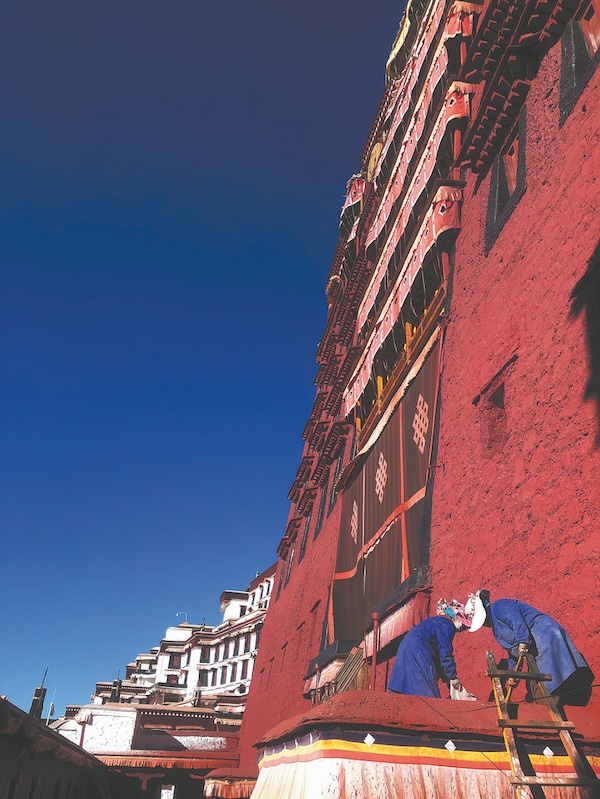Preserving the Potala Palace
Updated: 2025-04-22 By Palden Nyima and Daqiong in Lhasa (China Daily)  Print
Print 



Workers paint the walls of the Red Palace of the Potala Palace, as part of an effort to protect the outer surface of the ancient cultural structure. [Photo by Palden Nyima/China Daily]
Kunga Tashi, deputy director of the Potala Palace Management Office, says that the entire construction history spans 13 centuries, and the architecture and cultural relics collected from various periods reflect the political, economic and cultural exchanges and integration among the various ethnic groups of China.
"Today, the palace complex covers 130,000 square meters, with its main building soaring 115.7 meters high, making it the largest and most complete palace-style complex in Xizang," says Kunga Tashi.
Palden Tsering, cultural and museum librarian at the Cultural Relics Research Office, of the Potala Palace Management Office, says the cultural relics of the Potala Palace include silk, various artifacts and silk clothing.
"The ancient documents that have been registered and compiled detail the Tripitaka (a collection of Buddhist teachings), and various classics related to the five major and five minor sciences of Tibetan culture.
"The thangka paintings show different art styles, including the schools of Chewo Gangba, Karma Gardri, Manthang, Chentse, and Nepal," says Palden Tsering.
The treasures of the palace also include various bowls and porcelain gifted by ancient emperors, Buddha statues preserved in the Lima Lhakhang Hall, the King Songtsen Gampo Cave, the Avalokitesvara Chapel and other areas throughout the temple.
"The Potala Palace has many varieties of rich, distinctive cultural relics, and it is a model of ancient Tibetan architectural features," Palden Tsering says, adding the palace has currently registered and documented over 100,000 cultural relics.






